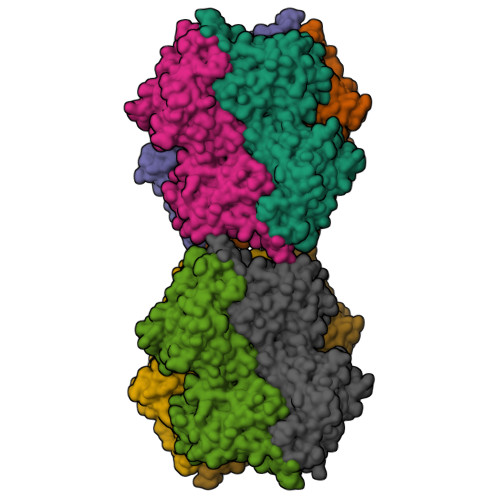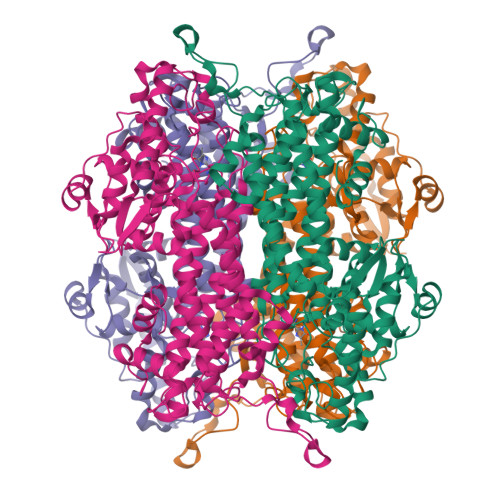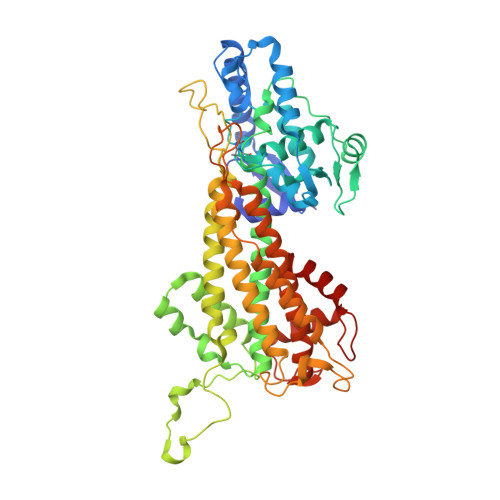Structural determinants and modulation of substrate specificity in phenylalanine-tyrosine ammonia-lyases.
Louie, G.V., Bowman, M.E., Moffitt, M.C., Baiga, T.J., Moore, B.S., Noel, J.P.(2006) Chem Biol 13: 1327-1338
- PubMed: 17185228
- DOI: https://doi.org/10.1016/j.chembiol.2006.11.011
- Primary Citation of Related Structures:
2O6Y, 2O78, 2O7B, 2O7D, 2O7E, 2O7F - PubMed Abstract:
Aromatic amino acid ammonia-lyases catalyze the deamination of L-His, L-Phe, and L-Tyr, yielding ammonia plus aryl acids bearing an alpha,beta-unsaturated propenoic acid. We report crystallographic analyses of unliganded Rhodobacter sphaeroides tyrosine ammonia-lyase (RsTAL) and RsTAL bound to p-coumarate and caffeate. His 89 of RsTAL forms a hydrogen bond with the p-hydroxyl moieties of coumarate and caffeate. His 89 is conserved in TALs but replaced in phenylalanine ammonia-lyases (PALs) and histidine ammonia-lyases (HALs). Substitution of His 89 by Phe, a characteristic residue of PALs, yields a mutant with a switch in kinetic preference from L-Tyr to L-Phe. Structures of the H89F mutant in complex with the PAL product, cinnamate, or the PAL-specific inhibitor, 2-aminoindan-2-phosphonate (AIP), support the role of position 89 as a specificity determinant in the family of aromatic amino acid ammonia-lyases and aminomutases responsible for beta-amino acid biosynthesis.
Organizational Affiliation:
Howard Hughes Medical Institute, Jack H. Skirball Center for Chemical Biology and Proteomics, The Salk Institute for Biological Studies, La Jolla, California 92037, USA.




















